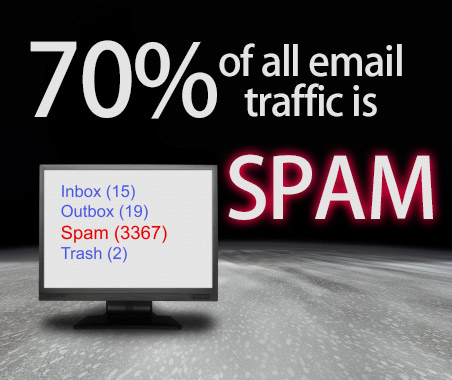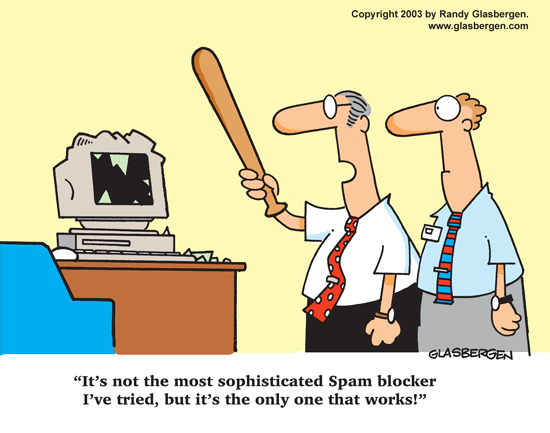Spam Statistics – The Problem
 Before 1980, SPAM was a canned mystery meat produced by Hormel Foods Corporation.
Before 1980, SPAM was a canned mystery meat produced by Hormel Foods Corporation.
Anyone born after 1980 who hears the word “spam” immediately thinks of the junk email that ends up contaminating their email box, or in a perfect world, ends up in their spam or quarantine folder. If you haven’t found a solution to your spam problem, check out some of the popular solutions below and my personal solution.
But first, check out one amazing stat on spam volume globally.

There are a lot of interesting spam statistics from Kapersky Lab in this article, but the most important takeaway is that about 70% of all email traffic worldwide is SPAM.
That’s amazing!
…and it shows the breadth of the spam problem. I often wonder if spam is going to lead ultimately to the demise of email. Luckily, technology has been able to keep spam at bay and out of our inboxes for the most part. If you still have spam in your mailbox every morning, keep reading to learn about common fixes and the solution I’ve used for the last 5+ years.
How We Fight Spam

- Let The Big Guys Handle It – If you use a gmail, yahoo, or some other email address from a large free email provider, you probably have spam protection built-in. Google has built powerful spam filters into Gmail to the point that over 10 years, I’ve hardly ever seen a spam email come through to my inbox.
- Software Solutions – Many companies and individuals who host email on their own domain name rely on software packages from companies like Barracuda, SpamFighter, and Symantec to filter email on their email server or client.
- Trusty ol’ Delete Button – Some people have never tackled their email problem, and instead choose to press the delete button a few dozen times every day. What they don’t realize is the time and frustration of deleting 70% of the message in their inbox might be costing more than the prize of a software solution to block them.
Whether you’re using software or letting gmail filter your spam, there are many technologies that are employed to actually do the work of redirecting spam to a junk mail folder. Some of the popular methods are checking the content of emails for common spam terms, validating the sender of mail, and blocking senders based on other recipients reporting spam. These technologies can get a little…well, technical so if you are a bit of a geek like me and want to read more about them, check out this wikipedia page.
If you’d rather get on with your life, I’ll share the software I have used for several years and recommend to others. It’s not the only solution, but it works for me.
My Solution – SPAMFighter
 I’ve used SPAMFighter for about 5 years and love it. I do recommend it as an affiliate now and earn commissions when people purchase the software.
I’ve used SPAMFighter for about 5 years and love it. I do recommend it as an affiliate now and earn commissions when people purchase the software.
SPAMfighter has a free version for home/personal use.
The thing about spam is you don’t want to think about it at all. You want to delete it from your inbox and your LIFE.
SPAMfighter does exactly that for me. I pay for it once a year, install it, and never really have to worry about spam or the software itself. I rarely get any spam emails showing up in my inbox NOR wanted emails going to the quarantine folder.
There are a lot of customization settings available in SPAMfighter but I’ve never had to use them. The only problem I’ve ever experienced with SPAMfighter is sometimes it shuts down after having my Windows Live Mail open for several days in a row. I just close WLM and reopen it, and SPAMfighter starts back up again. SPAMfighter works with the most popular Windows email clients:
- Outlook
- Outlook Express
- Windows Mail
- Windows Live Mail
- Mozilla Thunderbird
If you’re on a Mac, you’re on your own. But everything is simple on a Mac right? It looks like SpamSieve is popular spam blocking software for Mac.
Video Overview – How SPAMfighter works
httpvh://www.youtube.com/watch?v=Cr_gtCZY_fQ
